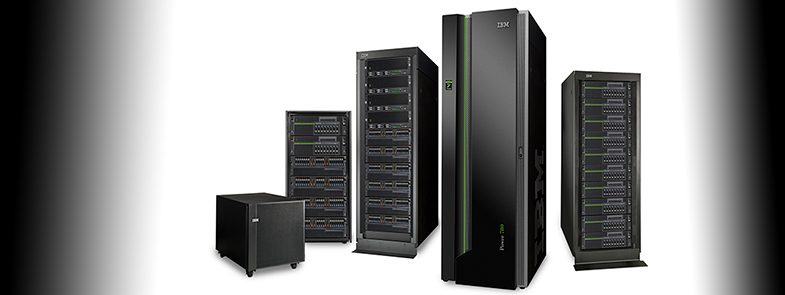As an IT leader, what strategies are you trying to achieve? Don’t say modernization.
I overheard this statement a few months ago: "Management won't upgrade our systems because our systems aren't modern and aren't worth the investment...because management won't upgrade our systems."
A year and a half ago, I moved from working for an IBM i customer to working for an IBM Business Partner. Since then, I’ve done many IBM i upgrades. In one particular month, I probably did more upgrades in my new job than in my entire career previously. In fact, I’ve been toying with the idea of getting C9002967 (applying PTFs) tattooed on my arm because I see it so often. Most of the upgrades have been from 7.1 to 7.3, but a few went to 7.2 because some application vendors didn’t receive the memo that Java 6 has been unsupported since December 31, 2017.
While a lot of progress is being made in getting people to move to a supported operating system release, I have to say that there’s still a need for a major mentality shift in the way companies approach modernization.
How many businesses are still running System/36 environments? Trust me; they’re out there. I see old RPG code, flat files, green-screens...they all can make that step into the world of free-form RPG, open source, and SQL tables. Bit by bit, program by program, interface by interface. Moving applications into the future can and should be thought of as imperative, rather than special projects.
Yes, applications can be modernized. Processes can be modernized. But to modernize a business? That’s far trickier but not out of the ordinary. The opportunity is there, but we may not see it as IT people.
I’ll get to that shortly.
The saying “you’re only as old as you feel” is the result of a mentality shift. It’s looking in the mirror and seeing experience rather than age. One of my daughters asked me once what my graying hair meant. I told her, “It means I know what I’m doing.” I’m getting older, but I don’t feel old. I don’t think I ever will. My body is showing signs of age, and I could use some more cardio work, but I can do an upgrade, have dinner, and then put down some deck joists or repaint the bathroom.
It’s all in how you look at things. Your house, job, family, car…they all need work. You can be a better homeowner and keep up your property value by continually performing maintenance and upgrades. You put oil in the car and check the tires. When the car gets too expensive to maintain, you trade it in for something more efficient. You try to talk through problems with your family and coworkers without letting your emotions get the better of you. You self-reflect. You reassess. You keep building and improving. If something doesn’t work, you try again. Then you try something totally different or just a different approach. You talk to your partners about how things could be better if you just worked on them.
And, yes, you do see the same in business…usually as a manager of quality and continual improvement. Here are a few bullet points from a job advertisement that spells out some of the common responsibilities.
- Facilitate the development of a plan to deliver long- and short-term business objectives through system deployment and capability building focused on alignment, the elimination of waste, and 100% employee engagement
- Establish monthly, quarterly, and annual deployment strategies, plans, and tactics
- Own the identification, facilitation, and tracking of functional cost improvement projects
- Coach and facilitate the leadership team
- Build capability and deploy systems to optimize value streams and work processes
- Assure integration of all PACS (Processes, Applications, Capabilities, and Systems) and effective governance to standards and master plan priorities
- Implement corporate loss analysis, idea generation, and promotion process
- Ensure that objectives are passed down and understood
I worked for 15 years in manufacturing companies, and this type of position is nothing new. However, one thing that I find looking back is that those positions were never really involved with systems discussions. Nor were systems people really given much time to help facilitate any continual improvement. Perhaps other people have had different experiences. But in my time as a customer, IT has always been on the outside looking in: an entity not aligned with the company, more like an afterthought once a decision has been made. “We’re doing this project. Make it work. It shouldn’t be too hard or take much time.”
A manager of continual improvement can certainly use Information Technology to help achieve goals. I would go one step further. I would look at this position as an Information Technology position or one at least closely aligned with it. This is exactly where IT needs to be as it’s exactly what IT does. And the position already exists; it just needs to be slightly altered to include IT. Or maybe IT needs to alter to fit the business. Or maybe the business needs to alter in order to properly utilize IT as a partner in order to achieve real continual improvement. That means proper budget allocations for projects, training and staff, plus a seat at the table to advise other business leaders how technology can work for them—rather than the other way around.
A company’s culture is the hardest to change. It’s like turning an aircraft carrier. You’re not going to do it by putting a paddle on one side of her. That direction needs to come from the bridge.
So when we talk about modernization, are we thinking tactically or strategically? Converting DDS to SQL is tactical. Converting to free-form RPG is tactical. Graphical interfaces, open-source tools, Linux partitions, upgrading to 7.2 or 7.3, converting System i Access for Windows to Access Client Solutions? Tactical, tactical, tactical, tactical, and tactical. They’re all tactical. And there must be an overall strategy that these tactics aim to support.
So as an IT leader, what strategies are you trying to achieve? Don’t say modernization. The strategy must be aligned with and supported by the business.






















 More than ever, there is a demand for IT to deliver innovation. Your IBM i has been an essential part of your business operations for years. However, your organization may struggle to maintain the current system and implement new projects. The thousands of customers we've worked with and surveyed state that expectations regarding the digital footprint and vision of the company are not aligned with the current IT environment.
More than ever, there is a demand for IT to deliver innovation. Your IBM i has been an essential part of your business operations for years. However, your organization may struggle to maintain the current system and implement new projects. The thousands of customers we've worked with and surveyed state that expectations regarding the digital footprint and vision of the company are not aligned with the current IT environment. TRY the one package that solves all your document design and printing challenges on all your platforms. Produce bar code labels, electronic forms, ad hoc reports, and RFID tags – without programming! MarkMagic is the only document design and print solution that combines report writing, WYSIWYG label and forms design, and conditional printing in one integrated product. Make sure your data survives when catastrophe hits. Request your trial now! Request Now.
TRY the one package that solves all your document design and printing challenges on all your platforms. Produce bar code labels, electronic forms, ad hoc reports, and RFID tags – without programming! MarkMagic is the only document design and print solution that combines report writing, WYSIWYG label and forms design, and conditional printing in one integrated product. Make sure your data survives when catastrophe hits. Request your trial now! Request Now. Forms of ransomware has been around for over 30 years, and with more and more organizations suffering attacks each year, it continues to endure. What has made ransomware such a durable threat and what is the best way to combat it? In order to prevent ransomware, organizations must first understand how it works.
Forms of ransomware has been around for over 30 years, and with more and more organizations suffering attacks each year, it continues to endure. What has made ransomware such a durable threat and what is the best way to combat it? In order to prevent ransomware, organizations must first understand how it works. Disaster protection is vital to every business. Yet, it often consists of patched together procedures that are prone to error. From automatic backups to data encryption to media management, Robot automates the routine (yet often complex) tasks of iSeries backup and recovery, saving you time and money and making the process safer and more reliable. Automate your backups with the Robot Backup and Recovery Solution. Key features include:
Disaster protection is vital to every business. Yet, it often consists of patched together procedures that are prone to error. From automatic backups to data encryption to media management, Robot automates the routine (yet often complex) tasks of iSeries backup and recovery, saving you time and money and making the process safer and more reliable. Automate your backups with the Robot Backup and Recovery Solution. Key features include: Business users want new applications now. Market and regulatory pressures require faster application updates and delivery into production. Your IBM i developers may be approaching retirement, and you see no sure way to fill their positions with experienced developers. In addition, you may be caught between maintaining your existing applications and the uncertainty of moving to something new.
Business users want new applications now. Market and regulatory pressures require faster application updates and delivery into production. Your IBM i developers may be approaching retirement, and you see no sure way to fill their positions with experienced developers. In addition, you may be caught between maintaining your existing applications and the uncertainty of moving to something new. IT managers hoping to find new IBM i talent are discovering that the pool of experienced RPG programmers and operators or administrators with intimate knowledge of the operating system and the applications that run on it is small. This begs the question: How will you manage the platform that supports such a big part of your business? This guide offers strategies and software suggestions to help you plan IT staffing and resources and smooth the transition after your AS/400 talent retires. Read on to learn:
IT managers hoping to find new IBM i talent are discovering that the pool of experienced RPG programmers and operators or administrators with intimate knowledge of the operating system and the applications that run on it is small. This begs the question: How will you manage the platform that supports such a big part of your business? This guide offers strategies and software suggestions to help you plan IT staffing and resources and smooth the transition after your AS/400 talent retires. Read on to learn:
LATEST COMMENTS
MC Press Online